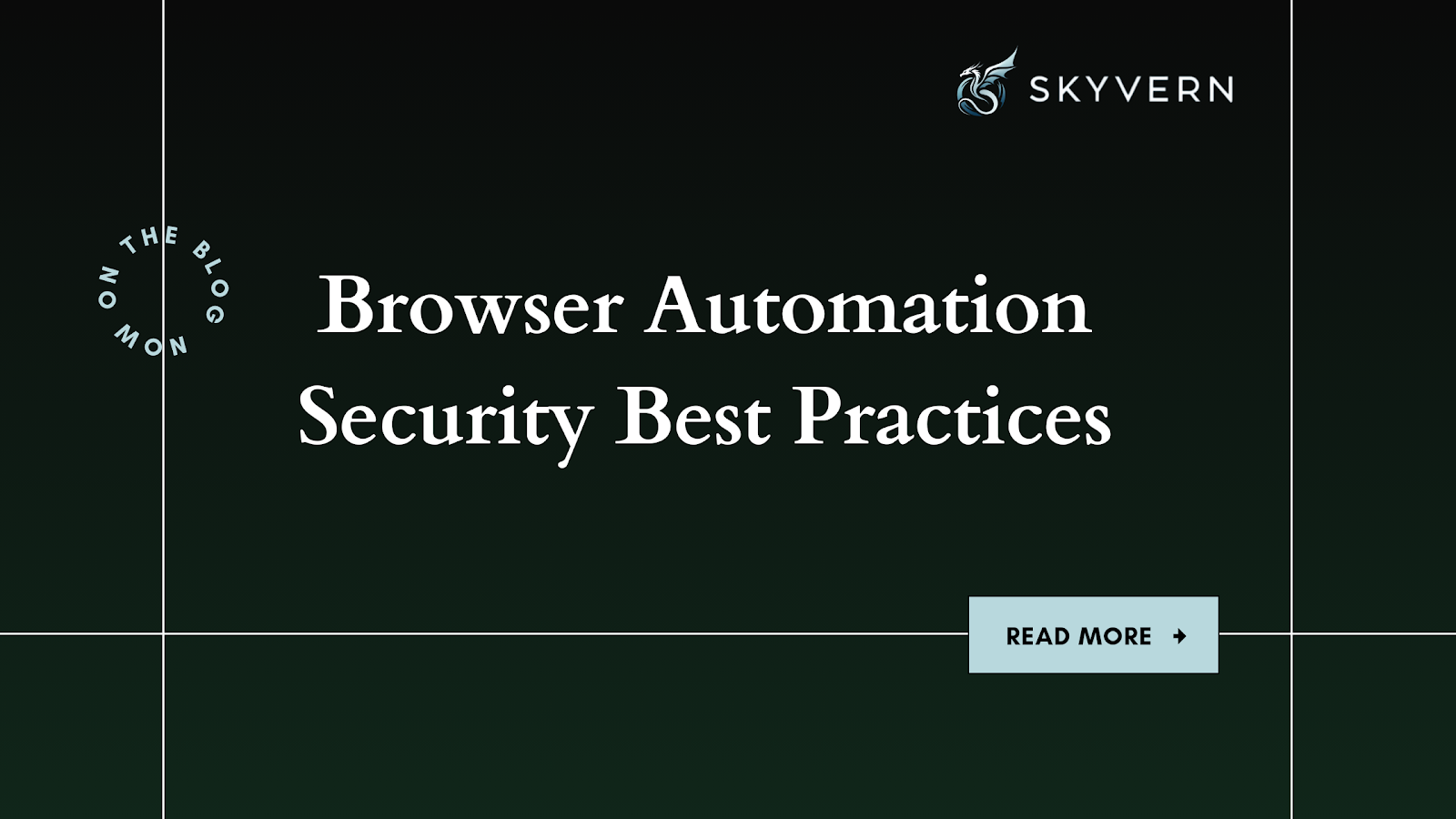Browser Automation Security Best Practices

If you're thinking about using browser automation to get your workflows streamlined, you're already ahead of the game. And if you're already using it, well… you're a real superstar. It's pretty much a lifesaver for any repetitive tasks like filling out forms, downloading invoices, or managing data entry. But with great efficiency comes great responsibility👀
The good news though? You don’t exactly need to be a security expert to keep your workflows safe. With just a few straightforward practices, you can protect sensitive information, avoid breaches, and ensure your tools always work seamlessly.
Let this guide walk you through some essential security tips to keep your operations safe.
Why Does Security Matter?
Think about it for a second: when you automate browser workflows, you're usually working with some kind of sensitive data—user credentials, payment details, or proprietary business information. Without proper security measures, you definitely risk exposing that data to unauthorized access, malicious attacks, or even unintentional leaks.
The stakes are even a lot higher for businesses. A single security slip could lead to losing customer trust, financial damage, compliance issues, and a lot more other problems. That’s why adopting strong security practices is so essential.
Practical Security Tips for Safe Automation
Use Secure Authentication Methods
This probably goes without saying—don’t leave your accounts vulnerable. Always enable two-factor authentication (2FA) or time-based one-time passwords (TOTP) when logging into websites.
Very important.
You can keep passwords secure by storing them in encrypted password managers rather than hardcoding them into scripts. This is a simple step that can prevent unauthorized access in case your automation scripts are ever compromised.
Rely on Proxy Networks
Proxies are your best friend whenever you're automating tasks across multiple locations. They help you avoid IP bans and make sure you are compliant with location-based targeting. With Skyvern, you can choose proxies down to the zip-code level, adding precision and privacy to your workflows.
Regularly Update Tools and Scripts
Outdated software can be an open door for hackers. Try to make it a habit to update your automation tools, libraries, and dependencies. Skyvern’s regular updates keep your workflows running smoothly while patching any known vulnerabilities.
Monitor and Log Your Automation Runs
Transparency is key. You could use a tool that offers built-in summaries that let you inspect every step your automation takes. If something goes wrong, detailed logs can help you quickly identify and fix the issue. Regular monitoring also helps you ensure your workflows stay compliant and efficient.
Test in a Safe Environment
Before deploying automation to live systems, ALWAYS test in a controlled, sandboxed environment. This way, you can reduce the risk of unintended consequences, like accidental data overwrites or unexpected interactions with production systems.
Handle CAPTCHA Challenges Responsibly
CAPTCHAs are designed to separate humans from bots, and improperly bypassing them can violate platform policies. Skyvern offers compliant CAPTCHA-solving capabilities, so your automations can handle even complex workflows without breaking the rules.
Skyvern: Automation Made Secure and Simple
At Skyvern, we get it—browser automation can be somewhat tricky. That’s why we’ve created a tool that’s pretty simple to use and has a lot of solid security features. You get CAPTCHAs handling, proxy networks, explainable AI, and even 2FA integration
Skyvern basically has you covered.
If you’re wondering whether our product fits your needs, book a demo, and we’ll help you figure it out.
Browser automation doesn’t have to be complicated or risky. Protecting your business doesn’t need to be overwhelming—it’s about taking the right steps to keep things running smoothly.

